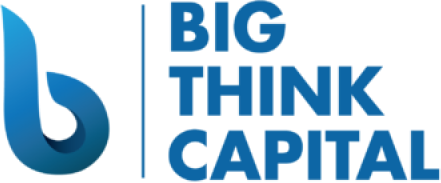Understanding the Impact of Fed’s Recent Interest Rate Decisions on Small Business Financing
Estimated Reading Time: 5 minutes
- Evaluate Your Financial Needs: Assess your short- and long-term financial requirements.
- Shop Around for Rates: Interest rates vary, so explore your options before deciding.
- Plan for Rate Increases: Consider possible future rate hikes in your financial planning.
Table of Contents
- The Federal Reserve’s Role in Interest Rates
- Current Interest Rate Landscape
- Impact on Small Business Financing Options
- Three Practical Takeaways for Business Owners
- Preparing for Future Uncertainty
- Conclusion
The Federal Reserve’s Role in Interest Rates
The Federal Reserve (often referred to as the Fed) plays a pivotal role in the U.S. economy. It adjusts interest rates to either stimulate or cool down economic activity. By raising rates, the Fed aims to control inflation, while lowering rates is typically a strategy to promote spending and investment.
In 2025, the Fed’s decisions have a cascading effect on various financial products used by small businesses, from lines of credit to equipment financing. A fundamental understanding of these dynamics can help business owners avoid costly financial pitfalls.
Current Interest Rate Landscape
As of 2025, the Federal Reserve has made several notable decisions regarding interest rates. Recent trends indicate that the Fed is adopting a cautious approach, primarily due to ongoing inflation and economic uncertainties. According to the Bureau of Labor Statistics, inflation rates peaked earlier this year and are now stabilizing source.
The current federal funds rate is set at 5.50%, which reflects a slight increase from previous periods. This adjustment follows a series of hikes aimed at curbing inflation, underscoring the need for entrepreneurs to be aware of how such changes affect their borrowing costs.
Impact on Small Business Financing Options
1. Working Capital Advances
Working capital advances allow businesses faster access to funds but often come with elevated interest rates. As the Fed raises rates, businesses should expect higher repayments and must weigh the cost versus the urgency of funding needs.
2. SBA Loans
SBA loans, backed by the federal government, provide attractive terms for small businesses. However, interest rates fluctuate based on the prime rate, which is influenced by Fed decisions. In 2025, potential borrowers should monitor the SBA’s variable interest rates, which are often pegged to the prime rate plus a margin.
3. Equipment Financing
For businesses seeking to invest in new equipment, financing remains an appealing option. Yet, with rising interest rates, the cost of borrowing for these loans can increase significantly. Businesses need to assess whether the investment will yield a return that justifies the higher costs associated with borrowing.
4. Merchant Cash Advances (MCA)
MCAs are often sought by businesses that require quick capital. However, these advances carry some of the highest fees and are additionally impacted by the Fed’s rate adjustments. Entrepreneurs should be especially cautious, ensuring they can manage repayments in a higher-rate environment.
5. Lines of Credit
While lines of credit offer flexibility, their interest rates are generally variable. As rates climb, the interest costs of utilizing these credit lines can also rise. Business owners should be strategic about drawing on these resources.
Three Practical Takeaways for Business Owners
As you consider financing options in light of current interest rate trends, keep these practical insights in mind:
- Evaluate Your Financial Needs: Before seeking funding, clearly assess your short- and long-term financial needs. Determine how much capital you require, how quickly you need it, and what you will use it for. This clarity will help you choose the right financing product based on current rates and terms.
- Shop Around for Rates: Don’t settle on the first offer. Interest rates vary depending on lenders and products, so it is crucial to shop around. Understand the average rates for different financing options available to you at this moment and negotiate based on the terms you find.
- Plan for Rate Increases: As you project your business’s financial future, account for possible rate increases. Build a contingency plan that addresses how future interest hikes could impact your repayment capacity or operating costs.
Preparing for Future Uncertainty
Given the unpredictable nature of the economy, it is wise for small business owners to stay informed about interest rates and economic indicators. Regularly review resources like the Federal Reserve’s announcements and economic reports to adapt your financing strategy accordingly.
Additionally, consider consulting a funding expert to gain personalized insights into how shifts in the market affect your specific business needs. At Big Think Capital, we specialize in helping small businesses navigate the complexities of financing. Our experts are ready to assist you in identifying the best funding solutions to fit your objectives amid changing interest rates.
Conclusion
Understanding the impact of the Federal Reserve’s interest rate decisions is crucial for entrepreneurs seeking to secure financing in 2025. With rates fluctuating and economic uncertainty prevalent, it is important to stay informed and adaptable. By evaluating your financial needs, shopping for rates, and planning for the future, you can take proactive steps to protect and grow your business.
At Big Think Capital, we are dedicated to providing innovative financial solutions tailored to meet the diverse needs of small businesses. If you would like to learn more about how we can help you navigate your financing options in today’s economic climate, visit us at bigthinkcapital.com or speak with one of our funding experts today. Let us empower your business journey by finding the right funding solutions for you.
FAQ
- What is the Federal Reserve and its role?
- How do interest rates affect small business financing?
- What should business owners do to prepare for changing rates?
What is the Federal Reserve and its role?
The Federal Reserve is the central bank of the United States, responsible for formulating monetary policy, including adjusting interest rates to manage economic stability.
How do interest rates affect small business financing?
Interest rates determine the cost of borrowing money. Higher rates can lead to increased costs for loans, reducing the overall amount of capital available to businesses.
What should business owners do to prepare for changing rates?
Business owners should regularly assess their financial needs, shop for the best rates, and create contingency plans to navigate potential rate increases.






